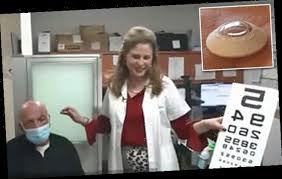
Breaking News
 BrightLearn - Revolutionizing Food: Grow Your Own Freedom...
BrightLearn - Revolutionizing Food: Grow Your Own Freedom...
 VIDEO: Alex Jones Goes Off On Trump, "The Globalists Have Been Deliberately Destroying...
VIDEO: Alex Jones Goes Off On Trump, "The Globalists Have Been Deliberately Destroying...
 Menopause and gut health: Decoding the relationship between hormones and digestive issues
Menopause and gut health: Decoding the relationship between hormones and digestive issues
Top Tech News
 Magnetic Fields Reshape the Movement of Sound Waves in a Stunning Discovery
Magnetic Fields Reshape the Movement of Sound Waves in a Stunning Discovery
 There are studies that have shown that there is a peptide that can completely regenerate nerves
There are studies that have shown that there is a peptide that can completely regenerate nerves
 Swedish startup unveils Starlink alternative - that Musk can't switch off
Swedish startup unveils Starlink alternative - that Musk can't switch off
 Video Games At 30,000 Feet? Starlink's Airline Rollout Is Making It Reality
Video Games At 30,000 Feet? Starlink's Airline Rollout Is Making It Reality
 Automating Pregnancy through Robot Surrogates
Automating Pregnancy through Robot Surrogates
 SpaceX launches Space Force's X-37B space plane on 8th mystery mission (video)
SpaceX launches Space Force's X-37B space plane on 8th mystery mission (video)
 This New Bionic Knee Is Changing the Game for Lower Leg Amputees
This New Bionic Knee Is Changing the Game for Lower Leg Amputees
 Grok 4 Vending Machine Win, Stealth Grok 4 coding Leading to Possible AGI with Grok 5
Grok 4 Vending Machine Win, Stealth Grok 4 coding Leading to Possible AGI with Grok 5
Legally blind man regains his sight after 10 YEARS following the first successful artificial cornea-

A man, 78, regained sight after 10 years following a cornea transplant
The device takes the place of the cornea and is fitted with biomimetic material
This stimulates cellular proliferation, leading to progressive tissue integrations
Following the surgery, Jamal Furani recognized faces and read a numbers chart
Jamal Furani, 78, lost his sight 10 years ago due to corneal disease, but thanks for modern science, the Israeli man is able to see once again.
Furani received an artificial cornea implant that integrated directly into the eyewall and following the one-hour surgery, he was able to recognize family members and read numbers on an eye chart.
The implant, called KPro, is a non-degradable synthetic nano-tissue that is placed under a thin membrane that covers the surface of the eyelid and the sclera, which is the white area of the eye.
The top layer of KPro is designed with biomimetic material that 'stimulates cellular proliferation, leading to progressive tissue integrations,' according to the implant's maker CorNeat.

 Why Politicians Seek Power
Why Politicians Seek Power HERE COMES THE MOTHERSHIP
HERE COMES THE MOTHERSHIP Venus Aerospace Hypersonic Engine Breakthroughs
Venus Aerospace Hypersonic Engine Breakthroughs

